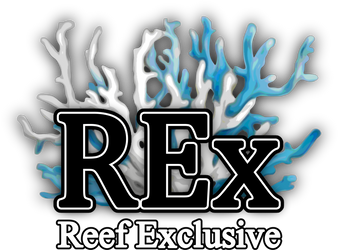
Coral Treatment for Infections (Brown Jelly) and Post-Fragging Recovery
Introduction
Successfully keeping corals in a marine aquarium requires being prepared to fight various infections and providing proper care after fragging procedures. One of the most common and dangerous problems is Brown Jelly syndrome - a bacterial infection that can spread rapidly and lead to coral death. In this article, we'll explore a proven coral treatment method that's effective for both infections and post-fragging recovery.
Pre-treatment of Corals
Before main treatment, it's necessary to pre-treat corals with hydrogen peroxide. This helps remove dead tissue and prepare the coral for the main procedure.
Pre-treatment Parameters:
- Solution: 3% hydrogen peroxide
- Concentration: 15-20 ml per 0.5 gallon (1.9 liters) of aquarium water
- Treatment time: 5-10 minutes
Application Instructions:
- When dipping the coral into the solution, gently pour water around it so the solution penetrates folds and areas with dead tissue.
- Carefully observe the coral. If you notice excessive bubbling, immediately remove the coral to avoid over-oxidation.
- Never reuse the solution. Always prepare a fresh batch of hydrogen peroxide for each application.
- Make sure to rinse corals before dipping and after, before returning them to the aquarium. This ensures more thorough cleaning.
Main Treatment Procedure
Required Materials:
- 1-gallon (3.8 liter) container for bath
- Heater
- Small sponge filter
Treatment Solution Recipe:
- 125 mg Amoxicillin OR 125 mg Metronidazole (use only one of these medications)
- 125 mg Ciprofloxacin
- 2.5 scoops Chemiclean
- 10 drops Brightwell Lugol's Solution
- 1 cap Brightwell Restor
Treatment Process:
- Add medications (Amoxicillin/Metronidazole, Ciprofloxacin, Chemiclean) to the bath.
- Fill container with 1 gallon (3.8 liters) of aquarium water.
- Set heater temperature to 74°F (23°C).
- Turn on sponge filter and let mixture circulate for 10 minutes.
- Add Lugol's Solution and Restor.
- Pre-rinse corals in diluted hydrogen peroxide.
- Dip corals in treatment solution for 2-6 hours.
- After treatment, rinse corals again in diluted hydrogen peroxide before returning to main aquarium.
Important Notes
Safety Precautions:
- Always prepare fresh solution for each procedure
- Carefully monitor coral condition during treatment
- Stop procedure immediately if stress signs appear
- Strictly follow specified dosages
Indications for Use:
- Bacterial infections (especially Brown Jelly)
- Post-fragging recovery
- Prophylactic treatment when adding new corals
Method Advantages:
- Comprehensive impact on various pathogens
- Minimizes stress for corals
- High effectiveness when properly applied
- Suitable for various coral species
Alternative Approaches
For particularly sensitive corals, a modified protocol can be used:
- Reduce treatment time to 1-2 hours
- Decrease medication concentration by 25%
- Conduct procedure at slightly higher temperature 75-76°F (24-25°C)
Infection Prevention
To prevent infection development and treatment necessity:
- Maintain stable water parameters
- Ensure adequate flow in the aquarium
- Regularly check corals for disease signs
- Quarantine new corals before adding to main aquarium
- Use prophylactic dips for new acquisitions
Conclusion
This coral treatment method represents an effective way to combat infections and assist in post-fragging recovery. When properly applied, it helps maintain coral health and prevent disease spread in the aquarium. However, it's important to remember that any treatment causes stress to corals, so it should only be used when necessary and instructions should be strictly followed.
Regular coral observation and timely response to the first problem signs are key to successful reef aquarium keeping.
Need help with reef aquarium calculations? Check out our comprehensive calculator tools at ReefExclusive Calculator Tools
